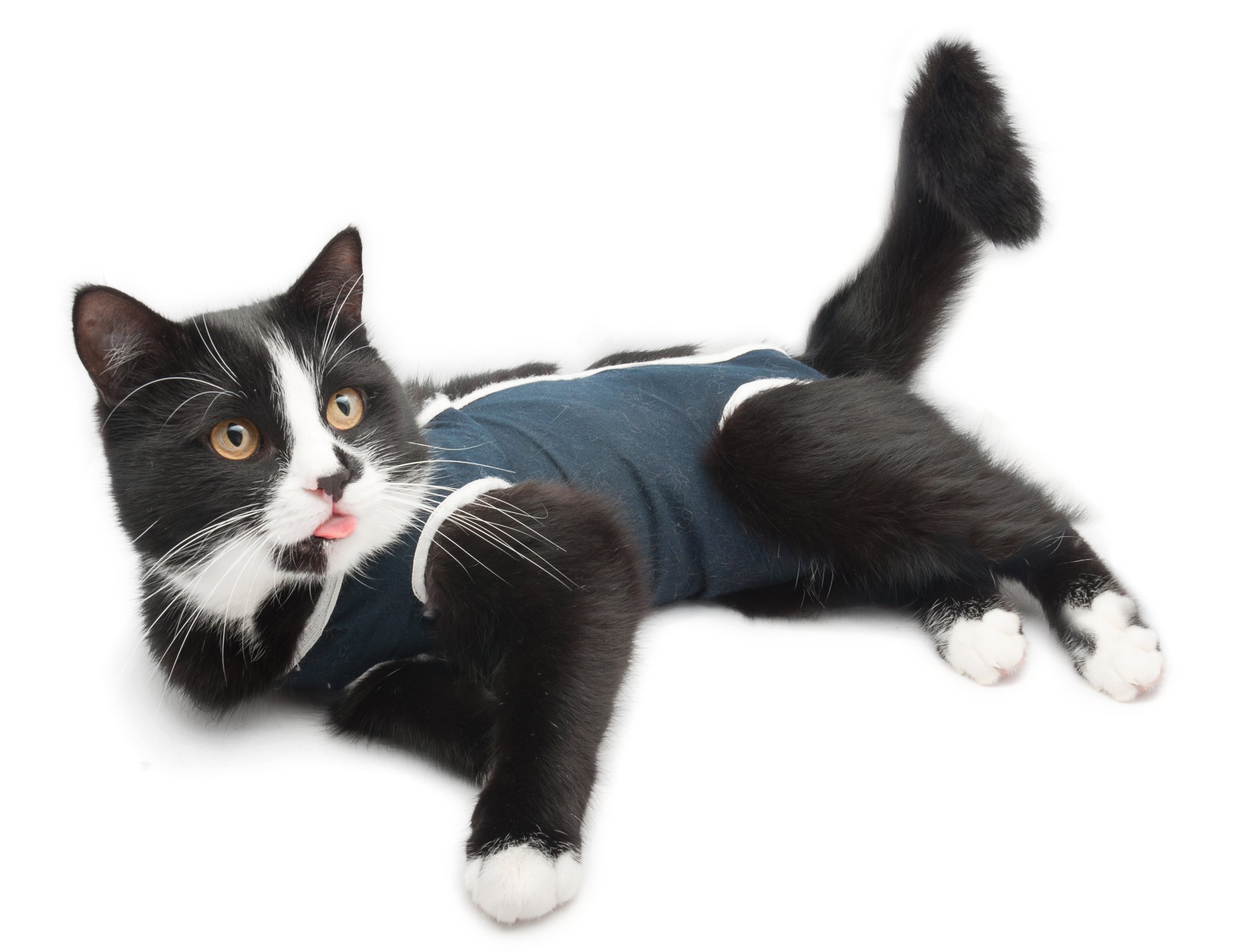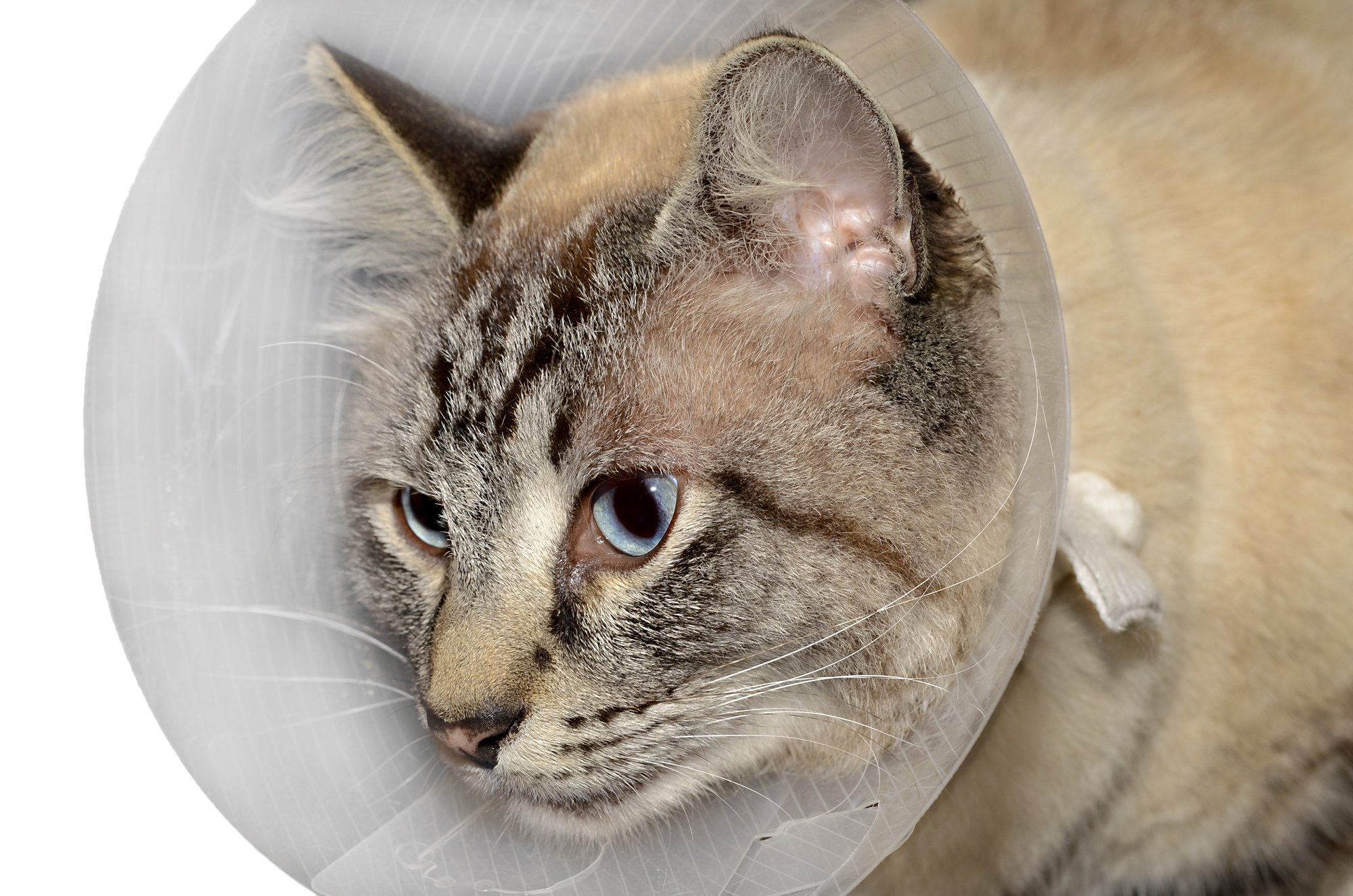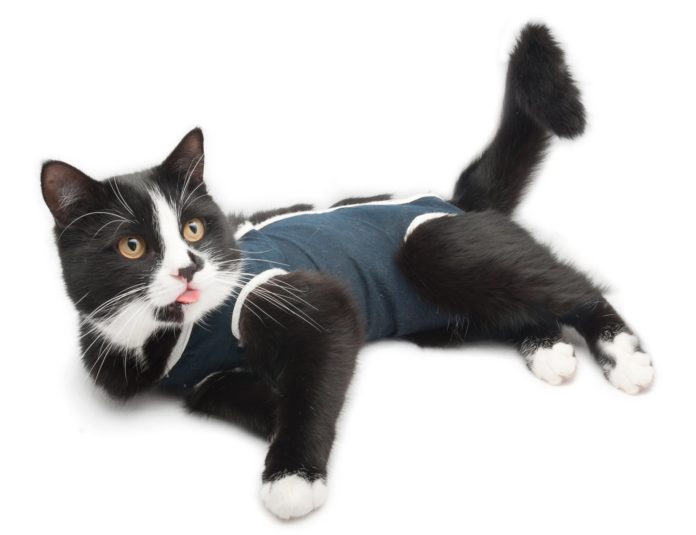
Incisions are delicate. Even if your veterinarian has opted to use stainless steel suture to prevent a pet from ripping the suture material, the skin itself can be torn. If your cat rips open her incision, she may be allowing things that should be inside her body to get out and allowing things from the outside world to get in.
Open incisions put a cat at risk for infection. The skin is an important barrier to prevent pathogens from getting inside your cat. An open, unprotected incision is an open gate for bacteria and debris (including cat litter).
Infections that become established inside the body can be difficult to eradicate. In some cases, open incisions may expose internal organs to direct damage via trauma, dehydration, or interruption of blood supply.
Cats can damage incisions by licking them, chewing at them, or by being too active during the healing process. However, these things can be prevented.
Elizabethan Collars
Also known as the dreaded “cone of shame,” Elizabethan collars are a mainstay of post-operative care and any situation in which access by a cat’s head to its body (and vice versa) needs to be blocked. The cone acts as a physical barrier that prevents your cat from licking or chewing at incisions on her body and/or scratching incisions on her head, but she can still eat and drink.
Your cat may not like the cone, especially if she is not used to wearing a collar. Be patient. Cats are smart, and she will adjust. If she knocks over her water bowl with the cone, try using a heavier ceramic bowl or one with a wide base that is more stable.
Cone Alternatives
There are alternatives to the Elizabethan collar that may work for your cat.
Inflatable “donut” collars give your cat full peripheral vision, but cats can reach around these to get to some locations, such as paws.
Human baby “onesies” fit many cats if you add a tail hole. The onesie provides a barrier between your cat’s tongue and the incision and isn’t as awkward to move around in. Some cats can wriggle out of a onesie, so choose one that isn’t too loose and supervise when you first put it on.
Baby and pet socks can work to protect paws. Use fabric tape to secure the top to your cat’s leg. Never use rubber bands or string to secure these, as they can constrict the limb and interrupt blood supply.
Limit Activity
Any time your cat moves, she can put strain on an incision. While most incisions should be able to withstand some tension on them, being too active can put excessive strain on the sutures and can cause them to break or tear through the skin.
Keep your cat confined, especially for the first few days after surgery. Large dog crates are excellent for this confinement, but you can also just restrict your cat to one room in your house. You should prevent her from doing things like jumping on and off a cat tree, vaulting between pieces of furniture, or running around the house like a crazy cat.
Definitely do not let a cat that has just had surgery go outdoors. Her cone could easily get stuck somewhere, and she is more likely to encounter pathogens that could get in through the incision.
Ice
If your cat will allow it, holding an ice pack over her incision for 10 to 15 minutes will help to decrease pain and inflammation for the first 24 to 48 hours after surgery. Wrap the ice pack in a thin towel to protect her skin.
Monitor the Incision
A small amount of clear drainage observed during the first day or two after surgery isn’t a big concern, but pus, blood, or large volumes of fluid may indicate that something isn’t right. Also watch for redness and swelling. If your cat is too active, the skin around the incision may look red and angry. Seromas are fluid-filled pockets that can form around incisions and may require veterinary attention. Seromas can be a result of too much activity.
If anything changes or doesn’t look right, don’t hesitate to email a photo to your vet or bring your cat in to the office. In these cases, a veterinarian or technician will look at the incision, and he or she can tell you if there is nothing to worry about or if the incision is compromised.
Medications
Follow medication instructions. Depending on the location and type of procedure, your veterinarian may prescribe pain medications and/or antibiotics. Pain medications should not be given more often than directed. Antibiotics are commonly prescribed to prevent infection, and there are often long-lasting injectable medications available, so ask your veterinarian about them if your cat hates taking pills.
With just that little effort and vigilance, your cat should recover quickly from surgery, without any post-operative complications.

What You Can Do
Tips for success with an Elizabethan collar
-Leave it on for as long as your veterinarian recommends. It only takes an instant for your cat to turn a secure stitch into an open wound.
-Keep it snug. As long as you can fit a finger under the tie, your cat will be able to breathe. If there is more slack than that, she may be able to slip out of it or kick it off with her hind legs.
-If your cat is particularly flexible, put a harness on her and tie the cone to the harness so that it is anchored to her body.
-Set your cat up for success, and limit her access to stairs or furniture that she could have trouble navigating while wearing the cone.
-Rigid plastic cones tend to yield the best results for most cats. Fabric cones are more comfortable, but also less sturdy, so your cat may be able to fold and reach around it or even flip it backward. If trying a fabric cone, supervise your cat to make sure that she isn’t working around it.



